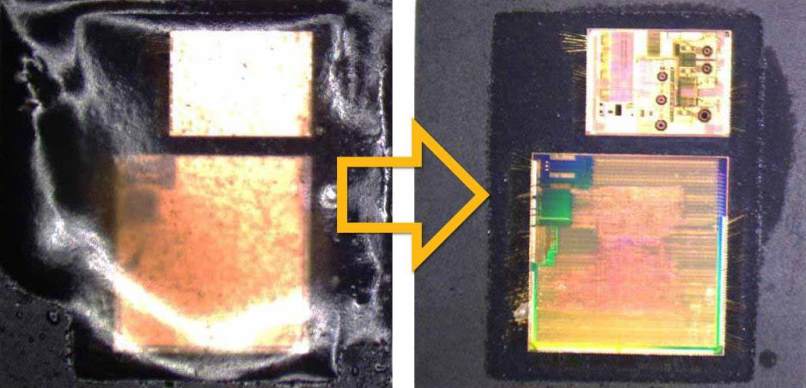Clone Chip PIC18F66K90 Software
Clone Chip PIC18F66K90 Software from program memory and data memory, and copy firmware to new MCU PIC18F66K90 which will provide the same functions after Break IC PIC18F66K90;

This family combines the traditional advantages of all PIC18 microcontrollers – namely, high computational performance and a rich feature set – with a versatile on-chip LCD driver, while maintaining an extremely competitive price point. These features make the PIC18F87K90 family a logical choice for many high-performance applications where price is a primary consideration.
All of the devices in the PIC18F87K90 family incorporate a range of features that can significantly reduce power consumption during operation. Key items include:
· Alternate Run Modes: By clocking the controller from the Timer1 source or the internal RC oscillator, power consumption during code execution can be reduced if extract mcu pic16f631 code.
· Multiple Idle Modes: The controller can also run with its CPU core disabled but the peripherals still active. In these states, power consumption can be reduced even further.
· On-the-Fly Mode Switching: The power-managed modes are invoked by user code during operation, allowing the user to incorporate power-saving ideas into their application’s software design.
· nanoWatt XLP: An extra low-power BOR, RTCC and low-power Watchdog Timer. Also, an ultra low-power regulator for Sleep mode is provided in regulator enabled modes when reading software of PIC16F687 Chip.
All of the devices in the PIC18F87K90 family offer different oscillator options, allowing users a range o choices in developing application hardware. These include:
· External Resistor/Capacitor (RC); RA6 available
· External Resistor/Capacitor with Clock Out (RCIO)
· Three External Clock modes:
– External Clock (EC); RA6 available
– External Clock with Clock Out (ECIO)
– External Crystal (XT, HS, LP)
· A Phase Lock Loop (PLL) frequency multiplier, available to the External Oscillator modes which allows clock speeds of up to 64 MHz. PLL can also be used with the internal oscillator.
An internal oscillator block that provides a 16 MHz clock (±2% accuracy) and an INTRC source (approximately 31 kHz, stable over temperature and VDD)
– Operates as HF-INTOSC or MF-INTOSC when block selected for 16 MHz or 500 kHz
– Frees the two oscillator pins for use as additional general purpose I/O
The internal oscillator block provides a stable reference source that gives the family additional features for robust operation:
· Fail-Safe Clock Monitor: This option constantly monitors the main clock source against a reference signal provided by the internal oscillator. If a clock failure occurs, the controller is switched to the internal oscillator, allowing for continued low-speed operation or a safe application shutdown.
· Two-Speed Start-up: This option allows the internal oscillator to serve as the clock source from Power-on Reset, or wake-up from Sleep mode, until the primary clock source is available.
1.1.3 MEMORY OPTIONS
The PIC18F87K90 family provides ample room for application code, from 32 Kbytes to 128 Kbytes of code space. The Flash cells for program memory are rated to last up to 10,000 erase/write cycles. Data retention without refresh is conservatively estimated to be greater than 40 years before Clone Chip.
The Flash program memory is readable and writable. During normal operation, the PIC18F87K90 family also provides plenty of room for dynamic application data with up to 3,828 bytes of data RAM.
1.1.4 EXTENDED INSTRUCTION SET
The PIC18F87K90 family implements the optional extension to the PIC18 instruction set, adding 8 new instructions and an Indexed Addressing mode. Enabled as a device configuration option, the extension has been specifically designed to optimize re-entrant application code originally developed in high-level languages, such as ‘C’.
Tags: clone chip flash archive,clone chip flash code,clone chip flash content,clone chip flash data,clone chip flash eeprom,clone chip flash file,clone chip flash firmware,clone chip flash information,clone chip flash memory,clone chip flash program

